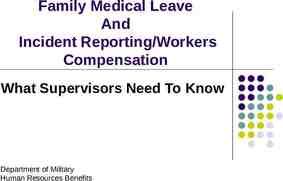How the Internet works related sections to read in Networked
21 Slides1.58 MB

How the Internet works related sections to read in Networked Life: 10.1-10.2 13.1 14.1 15.1-15.2 17.1

Take a moment to think about how amazing the Internet is: – It’s always on – It is “free” – It’s (almost) never noticeably congested (though individual sites or access points might be) – you can get messages to anywhere in the world instantaneously – you can communicate for free, including voice and video conferencing – you can stream music and movies – it is uncensored (in most places) (of course, this can be viewed as good or bad)

This talk focuses on the question of how the Internet can be so robust – Is there an “Achilles’ heel”? a single point of failure that can be attacked? – How does the network autonomously adapt to congestion? To answer these questions, we will discuss some of the underlying technologies that contribute to the robustness of the Internet – packet switching – Ethernet – TCP/IP – routing protocols

Evolution of the technologies underlying the Internet – the Internet was not designed top-down by a single company or government organization – it evolved many alternative technologies/protocols were proposed and tried out eventually, the best were identified and adopted (in a “democratic” way) when new people joined, they had to use whatever protocols everybody was using, until it grew into a standard – it is decentralized – no one owns it or controls it

Compare with the old-style telephone networks – designed top-down by companies like AT&T, who built the network of telephone lines, and wanted (and had) complete control over their use – good aspect of design: old handsets did not need electrical power energy for dial-tone and speakers came from phone line phones would work even if power knocked out in electrical strorm – con: they were circuit-switched (a dedicated path between caller and receiver had to be established, and most of that bandwidth was wasted) In contrast, given how the Internet “grew”, it is amazing it works at all (!)

protocol stacks layered architecture each layer is an abstraction that assumes the functionality of the layer underneath files unencrypted streams buffers packets frames bytes bits drivers, network card

Ethernet local machines on common wire hear all transmissions in cases of packet collisions, use a “back-off” algorithm each machine waits a random time (gauged by the amount of congestion) to re-transmit

IP addresses [0-255].[0-255].[0-255].[0.255] 128.194.139.1 (associated with a specific MAC) domain . domain . subnet . host IPv4 (current standard, 4 billion IP addresses) IPv6 (extended address space: 2128 1039 devices) 128.194.139.1 sun.cs.tamu.edu DNS – domain name server – distributed network of servers that translate hostnames to IP addresses – TAMU campus has several DNS servers that communicate with others worldwide – nslookup: www.google.com 74.125.227.145

TCP-IP transport layer built on top of IP – assumes can send datagrams to IP addresses UDP: User Datagram Protocol – simple, fast, checksums, no guarantee of delivery TCP-IP: Transmission Control Protocol – connection-oriented: hand-shaking, requires message acknowledgements (ACK) – guarantees all packets delivered uncorrupted in order

TCP-IP packets a file or message is divide up into packets information: source IP address destination IP address mesg sequence number (for acknowledgement) payload size checksum payload (e.g. 512 bytes) Geoff Huston, www.potaroo.net/ispcol

Congestion Control TCP/IP senders track the response time of ACK messages separate latency (roundtrip) from throughput (bandwidth) adaptively adjust transmission frequency Geoff Huston, www.potaroo.net/ispcol

routers and routing each router switches packets among its local connections there are many paths from source to destination ideally, what we want is to identify the shortest path (Bellman-Ford algorithm) http://int.fhsu.edu/kevin/courses/datacom1VC/html/chapter 10.html each router maintains a router table of IP addresses sent on outgoing links (plus congestion information)

port 1 TCP/IP packet, dest 128.19.32.3 port 2: addresses 128.1.1.1 to 132.255.255.255 router Router table port IP address range 1 001.*.*.* to 127.*.*.* 2 128.1.1.1 to 132.255.255.255 3 133.1.1.1 to 191.255.255.255 4 192.1.1.1 to 253.*.*.* 5 254.1.1.1 255.255.255.255 port 5 port 3 port 4 Essentially what routers do is receive packets, extract destination IP,and switch them to an out-going port. Each router has a limited capacity (throughput or bandwidth, e.g. 10 GB/s).

Robustness of the Internet does the Internet have an “Achilles’ heel”? is there a single point of failure (that could be attacked)? or is it designed to be fault tolerant? it is hard to know the overall topology does the connectivity follow a Poisson distribution? – is there an “average” number of connections, some with more, some with less?

Modeling the Internet’s Topology proportion of nodes The connectivity profile likely follows a Power Law (or Zipf) distribution – many nodes have few connections (on the edge?) – few nodes have many connections (in the core?) – if d is the degree of a node (# connections), then p(d x) kx- (“scale-free” networks) – however, this does not necessarily imply that there are a few highly connected nodes in the core of the Internet which would become “choke points” number of connections per node www.crossway.org

Modeling the Internet with Random Networks Preferential Attachment (PA) model – new nodes probabilistically connect to popular nodes Constrained Optimization (CO) model – when a cable/router reaches capacity, add another both of these generate “scale-free” topologies however, CO has much better performance http://www.nature.com/ nature/journal/v406/n6794

“The Net routes around damage” x the adjacent nodes just update their router tables

What about Internet Congestion? the packet-switched design solves this packets can take multiple paths to destination and get re-assembled if one router gets overloaded, buffer overflow messages tell neighbors to route around it also TCP/IP “back-off” algorithm – monitors throughput of connections and adjusts transmission frequency adaptively thus the Internet is amazingly robust, adaptive, and fault tolerant by design

Streaming Netflix, Pandora VOIP (voice-over-IP, Skype) video-conferencing multi-casting (Olympics) dither and jitter use lossy compression to adjust stream to end-to-end bandwidth use buffering to smooth out arrival of packets delayed and out-of-order intermediate servers staged for local distribution (e.g. Akamai) quality-of-service guarantees (QoS) uneven arrival of packets buffer images from: pagetutor.com/ imagecompression even playback

Access speed is determined by service provider (bandwidth of connection, e.g. dialup to T1) Internet backbone – who owns it? – who controls it? can you tell somebody to stop streaming or hogging all the bandwidth? (the cable and phone companies would like to!) Net Neutrality – public policy issue; major economic impact – service providers cannot discriminate based on user, content, packet type or destination, similar to highways

Wireless/Mobile replace Ethernet (IEEE 802.3) with 802.11 transport protocol (TCP/IP) and higher layers in stack remain the same issues – dynamic IP address assignment (DHCP) ask router for temporary unique IP address – new nodes may join or leave anytime – roaming – device might change from one receiver/cell to another, take IP with it? causes changes in routing tables? – security – encrypt packets sent over the air






